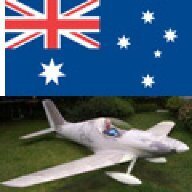There may be some STOL junkies out there that will argue with me but, typical operations for the A22LS (or L as I've flown) is no flap for normal takeoffs, and only one stage for normal landings.
As a rough guess, a trainee pilot probably needs about 8~10 hours of landings with one stage before playing with two stage due to the change in characteristics that come with two stages.
Yes, some will argue that they teach two stage from the start, but I feel it then takes longer overall for the students to get the hang of it.
I should point out I teach all glide landings, 'cause you'll need it one day, and with the introduction of electric aircraft, it will become the norm again.
The change in characteristics between flap setting is fairly noticeable with some rudder needed to co-ordinate with one stage, and a lot of rudder to co-ordinate with full flap.
As for removing flap during touch and goes, the A22L has a fairly low flap speed (60kts) so careful speed management is required if going around with flap so, probably better to get the flaps away before adding power.
As a side note yes, the flaps can be a bit awkward from the left seat, most seem to want to change hands.
I tend to find when soloing from the left seat, I change hands for the flaps, but when instructing from the right seat, I reach across and still use my right hand, odd really.
As for flying in gusty conditions, the Foxbat has VERY light and powerful ailerons in the 'UP' position, and still very effective ailerons in the first stage position, but if the wind is more than about eight knots from any more than forty five degrees across, I would not instruct to land with full flap.
I could do it as could many of the experienced pilots here, but not for students.
Little side note here about landing 'Bats (and many tricycle types) in strong crosswinds; regardless whether you approached crabbed (my choice) or crossed-up, once you have the mains on the ground you will find yourself holding lots of rudder to maintain directional control.
This is not good for the nosewheel when it hits the ground (sideways) so, just before the nose goes down, apply a LOT of aileron into wind, and use the adverse yaw to align the aircraft while straightening the nosewheel.
Are you landing on all three wheels?
You're landing too fast, go back and practice keeping the nose off the ground!
OK, putting on flame suit, have at me!!











